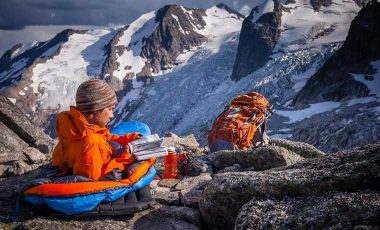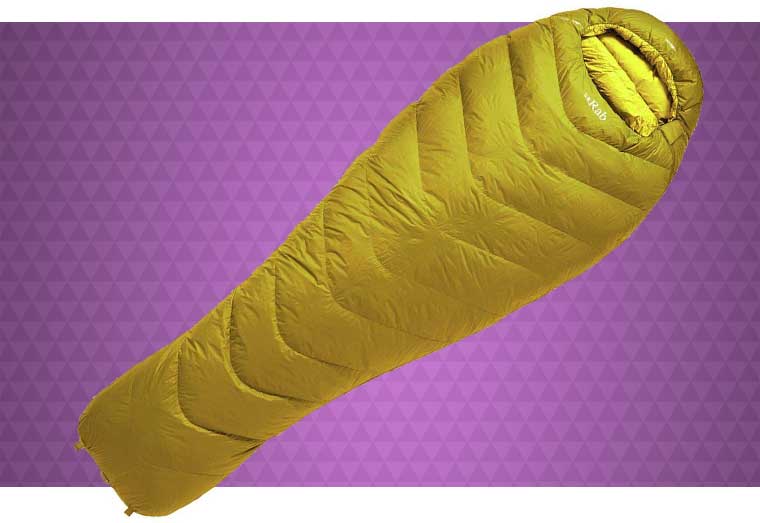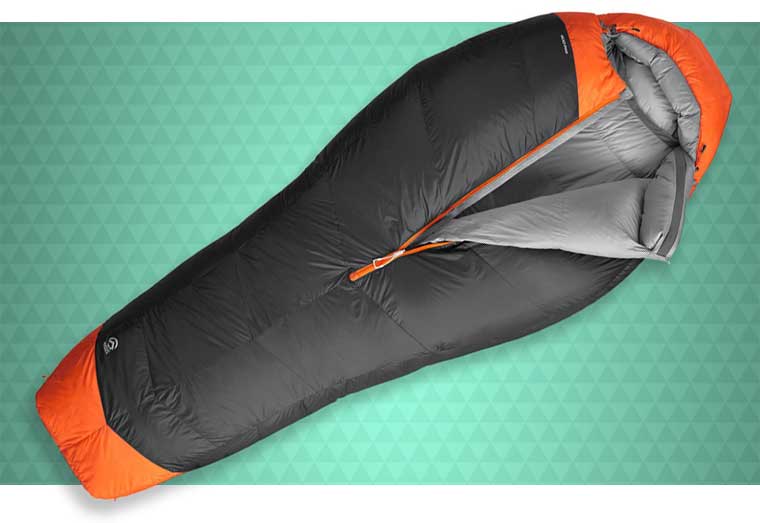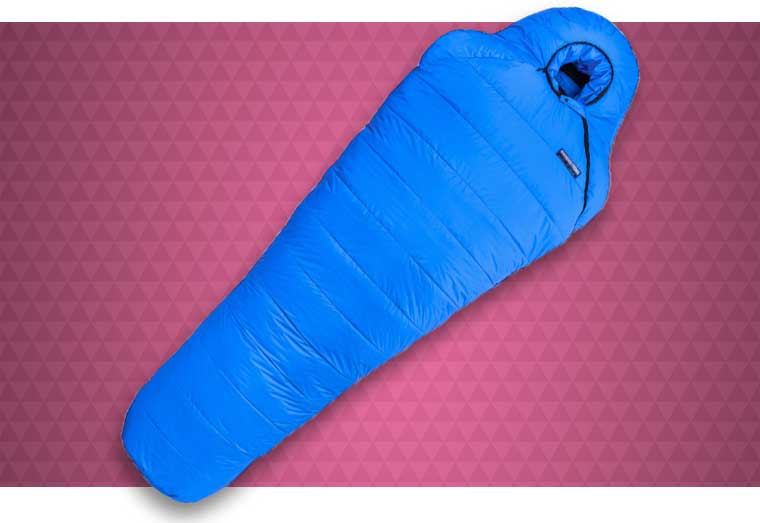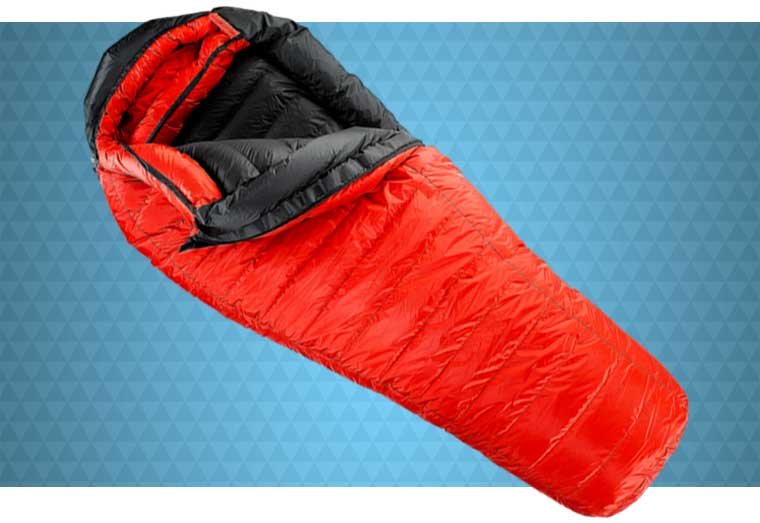Ever spent an entire night shivering in a tent? Or woken up with ice blocks for feet? Anyone who’s underestimated the temperature on a cold weather camping trip can tell you the importance of a good quality sleeping pad and a mega warm sleeping bag. If you haven’t yet spent a night hunched inside a summer sleeping bag, impatiently awaiting the sunrise, then congratulations! Let’s keep it that way.
Perhaps you’re preparing for a high altitude backpacking expedition or maybe you’re getting ready for a winter camping trip. Either way, sleeping under the stars is much more pleasant when you can feel all ten of your toes. But, there are a lot of sub-zero sleeping bags on the market and each one claims to be the best for extreme weather. So, which one should you choose?
We’ve researched sleeping bags extensively, from lightweight sleeping bags to mountaineering sleeping bags and sleeping bags designed for the extreme cold. Here, we’ve put together our selection of the best cold weather sleeping bags. And, just to make things extra easy, we’ve made a guide of features to look for before you purchase your cold weather sleeping bag.
- 4 best winter sleeping bags
- 6 best extreme cold weather sleeping bags
- What to look for in a cold weather sleeping bags
- Insulation, fill power and fill weight
- Temperature rating
- Size and weight
- Water resistance
- Style and shape
- Ethics and sustainability
- Design features of cold weather sleeping bags
Summary of the best cold weather sleeping bags in 2024
Disclaimer: We use affiliate links and may receive a small commission on purchases.
| Product | Down fill power | Down fill weight | Weight of bag | Extreme temperature rating | Cost |
|---|---|---|---|---|---|
| Mountain Hardwear Phantom Sleeping Bad | 850 | 840g | 2.66lbs / 1.2kg | 0ºF / -18ºC | $$$ |
| Feathered friends Murre Ex 0 Women’s Sleeping Bag | 900+ | 663g | 2.66lbs / 1.2kg | 0ºF / -18ºC | $$$ |
| Marmot Never Summer 0 Sleeping Bag | 650 | Not available | 3.19lbs / 1.45kg | 0ºF / -18ºC | $ |
| The North Face One Bag Sleeping Bag | 800 | Variable | 3.75lbs / 1.7kg | 5ºF / -15ºC | $ |
| Rab Neutrino 800 Sleeping Bag | 800 | 800g | 2.66lbs / 1.2kg | -7.5°F / -22°C | $$ |
| The North Face Inferno -20 Sleeping Bag | 800 | 1000g | 3.3lbs / 1.5kg | -20ºF / -29ºC | $$$ |
| Marmot CWM Sleeping Bag | 800 | 1400g | 4.6lbs / 2 kg | -40ºF / -40ºC | $$$$ |
| Alpkit ArcticDream 1200 | 750+ | 1200g | 3.75lbs / 1.75kg | -73.48ºF / -58.6ºC | $$ |
| Feathered Friends Snowy Owl Expedition Down Sleeping Bag | 900+ | 1500g | 5lbs / 2.3kg | -60ºF / -51ºC | $$$$$$ |
| Western Mountaineering Bison GWS Expedition | 850+ | 1190g | 4.6lbs / 2kg | -40ºF / -40ºC | $$$$$$ |
4 best winter sleeping bags
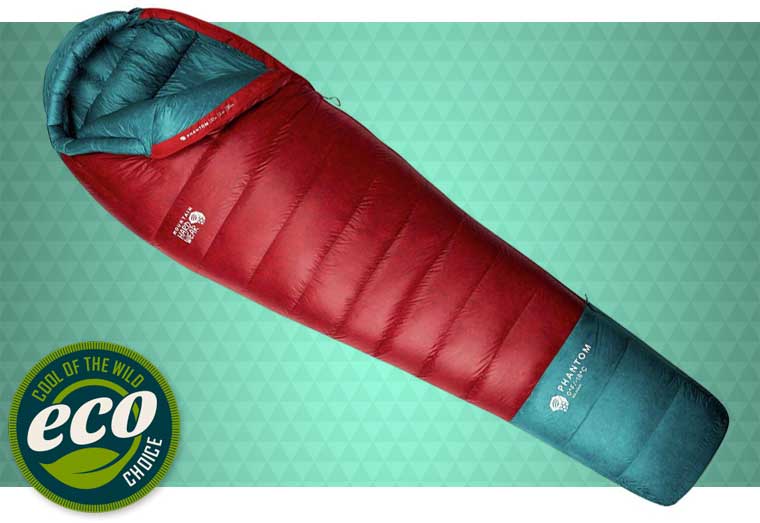
Mountain Hardwear Phantom Sleeping Bag
Fill power: 850
Fill weight: 840g
The Phantom Sleeping Bag from Mountain Hardwear is a lightweight cold weather sleeping bag with an extreme temperature rating of -18ºC. It’s insulated with 850 fill power down and has a 10D recycled shell and DWR finish. Additionally, the 4-chamber hood, combined with a draft collar, and contoured footbox prevent the loss of body heat.
The Phantom sleeping bag weighs approximately 1.2kg and packs into a compact nylon sack. It’s also fitted with a two-way zipper which extends until the contoured footbox so you can still sleep comfortably on warmer nights. The bag comes in 3 sizes and can be ordered with a left or right-hand zipper.
Pros
- Lightweight and compact pack size
- Made with recycled materials
- Water-resistant
- Versatile fit
Cons
- Pricey
Find the latest price on:
REI | Mountain Hardwear | Backcountry

Feathered Friends Murre Ex 0 Women’s Sleeping Bag
Fill power: 900+
Fill weight: 663g (small)
The Murre EX 0 Sleeping Bag from Feathered Friends is specifically tailored for female campers. As such this mummy bag is slimmer on the shoulders than the average unisex sleeping bag. This traps and insulates warm air better. It’s also more spacious on the hips and waist allowing campers to find a comfortable sleeping position. For further comfort, the bag is constructed with continuous baffles which lets you re-position the down. It’s also fitted with a 3D contoured hood, extra insulated footbox, and draft tube for extra protection from the cold.
The 900+ fill power goose down and the water-resistant shell does a good job of shielding you from the elements too. The extreme temperature rating is -17.7ºC. Despite this, the Murre EX 0 weighs in at under 1.2kg (small), making it a superbly lightweight mountaineering sleeping bag. This Feathered Friends sleeping bag is available in small or medium and has two colour options.
Pros
- Women-specific fit
- Good weight to warmth ratio
- Water-resistant and moisture wicking
Cons
- Pricey
Find the latest price at:
Feathered Friends
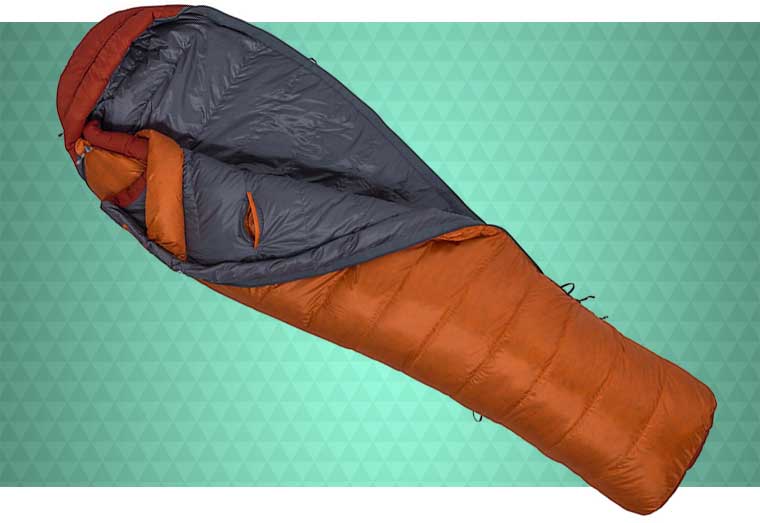
Marmot Never Summer 0 Sleeping Bag
Fill power: 650
Fill weight: Unavailable
When it comes to value for money the Never Summer 0 Sleeping Bag from Marmot is our top choice. Coming in at under $300, it’s one of the lowest priced alpine sleeping bags on this list. Despite this, the Never Summer 0 still boasts an EN tested extreme temperature rating of -18ºC. A wraparound footbox is combined with a down-filled collar and multi-baffle hood.
A unique feature on the Never Summer 0 is that the top draw-cord is combined with a double zippered collar allowing for ventilation on warmer nights. It’s also a useful feature for campers who like a little extra space to read whilst snuggled inside the sleeping bag.
The main difference between the Never Summer 0 and its high-priced competitors is its fill power and weight. The 650 fill power down offers a less efficient weight to warmth ratio than the Phantom 0 and Murre EX 0. It, therefore, weighs in at a hefty 1.45kg making it better suited to car campers than hikers.
Pros
- Versatile collar design
- EN tested
- The durable and water-resistant outer shell
- Excellent value for money
Cons
- Heavier than others on this list
Find the latest price on:
Amazon | Backcountry | REI | Alpine Trek
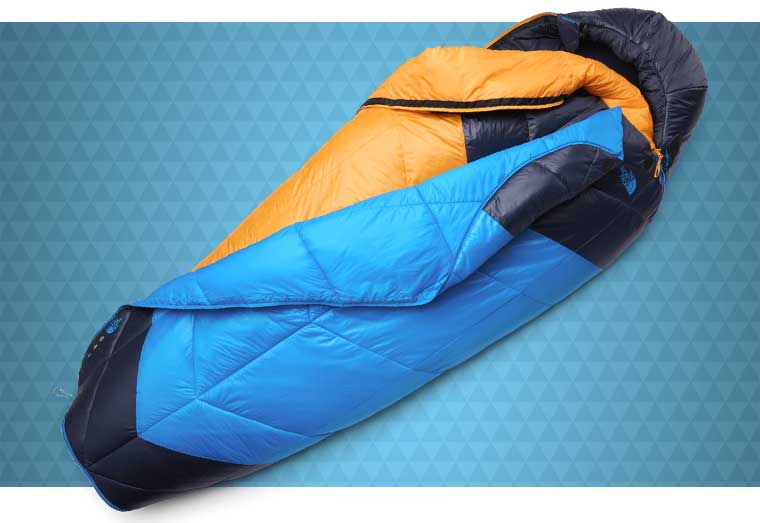
The North Face One Bag Sleeping Bag
Fill power: 800
Fill weight: Unavailable
The One Bag is available in two sizes; regular (1.7kg) or long (1.8kg). Though certainly not lightweight, it comes in at just under $300, making the One Bag an excellent value and highly versatile sleeping bag.
Pros
- Suitable for a range of temperatures
- EN and ISO (International Organisation for Standardisation) Tested
- Excellent value for money
Cons
- Heavy
Find the latest price at:
REI | Amazon | Backcountry
RAB Neutrino 800 Sleeping Bag
Fill power: 800
Fill weight: 800g
To prevent any cold spots, the Neutrino 800 is constructed with trapezoidal (horizontal) baffles. Some users may find the tapered mummy bag shape a bit restricting to sleep in, however, the design does help to trap heat and reduce weight. On the other hand, the angled footbox and comfortable 3D internal collar guarantees a comfortable night’s sleep. Plus, with a minimum temperature limit of -22ºC, the Neutrino 800 is certainly built for extreme conditions.
Pros
- Lightweight
- Made from high-quality fabrics
- Ergonomic design
- RDS Certified goose fill
Cons
- The tapered shape may feel restrictive
Find the latest price on:
Amazon | Backcountry | Alpine Trek
6 best extreme cold weather sleeping bags
The North Face Inferno -20 Sleeping Bag
Fill power: 800
Fill weight: 1000g
Designed for mountaineering in sub-zero conditions, The North Face Inferno is a compact sleeping bag to add to your kit list. Weighing in at 1.5kg, it’s lighter than many sleeping bags with similar extreme temperature ratings (-20ºF).
Despite this, it still provides excellent insulation. The sleeping bag is made with 800 down fill that’s treated with a hydrophobic finish. This means that it repels water and dries faster than regular down. Its outer shell is made from water-resistant Neovent Air fabric and fitted with a full draft collar.
Although it’s a mummy bag, the upper cut is more generous than others on this list. You’ll have a decent amount of wiggle room inside the bag and space for extra layers if needed. Other useful features include a central zipper, making it easier to get in and out. With The North Face Inferno -20 sleeping bag in your winter expedition pack you’re guaranteed a warm night’s sleep, even in wet weather.
Pros
- Spacious
- Water-resistant outer shell
- Available in two lengths (regular or long)
- Light enough for alpine trekking
Cons
- Only has one inside drawcord
- Pricey
Find the latest price at:
REI
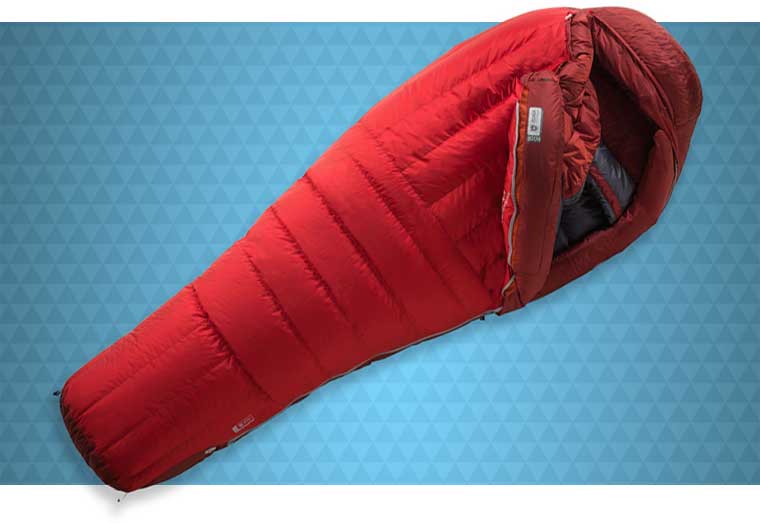
Marmot CWM Sleeping Bag
Fill power: 800
Fill weight: 1400g
If you’re camping in extreme temperatures, then the Marmot CWM might be the right sleeping bag for you. This cold weather sleeping bag is filled with 800 power down and boasts an extreme temperature rating of -40º. It has a cross-baffle construction and baffled hood as well as a down-filled draft tube fitted behind the left-side zipper for supreme insulation. To minimise condensation and maximise breathability, the down-fill is protected by a waterproof Pertex Shield outer shell. For extra comfort, the Marmot CWM sleeping bag is available in two sizes, regular or long. The regular size weighs 2 kg. It’s not the lightest cold weather sleeping bag out there, but it’s still a reasonable weight for mountaineering expeditions.
Pros
- The baffled design keeps the down in place
- Reasonable warmth to weight ratio
- Suitable for extreme temperatures
Cons
- Too warm for mildly-cold temperatures
- Pricey
Find the latest price at:
REI | Alpine Trek | Amazon
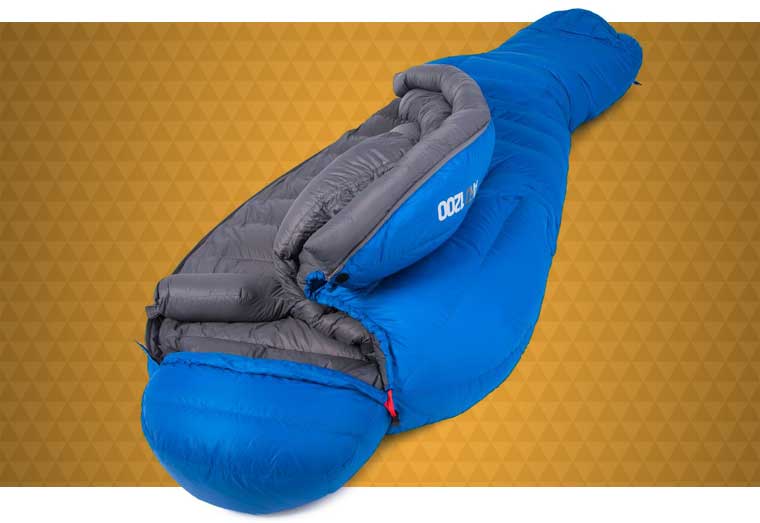
Alpkit ArcticDream 1200
Fill power: 750+
Fill weight: 1200g
It has 750 down-fill insulation and comes with a very competitive price tag. The Arctic Dream 1200 is constructed with ergonomic vertical baffles which help to keep the down in place. Meanwhile, the tapered shape and zip baffles effectively trap heat. The bag is even fitted with extra insulation in the hood and footbox.
The outer shell and inner are made from lightweight expedition-grade fabrics while the down-fill is treated with water-repellent Nikwax Hydrophobic which helps the down maintain its warmth even when wet. Considering the temperature rating of this sub-zero sleeping bag it’s also reasonably lightweight, at just 1.7kg.
Pros
- Lightweight for its warmth
- Water-repellent
- EN Tested
- RDS Certified Down
- 3 Year Warranty
Cons
- Lower down-fill quality
Find the latest price at:
Alpkit
Feathered Friends Snowy Owl Expedition Down Sleeping Bag
Fill power: 900+
Fill weight: 1500g
Another thing we like about this Feathered Friends sleeping bag is that it’s fitted with a dual zipper system. Aside from preventing drafts and trapping air, this system provides a backup in case of damage to the external zipper. Plus, the Snowy Owl is made using lightweight Pertex fabrics which keeps the weight to a minimum. The outer shell is built with a breathable and highly waterproof Pertex Shield which repels rain and snow. Meanwhile, the collar is designed to prevent condensation from breath.
Pros
- Spacious design
- Breathable and water-repellent
- Ergonomic fit
Cons
- Pricey
- Heavy
Find the latest price at:
Feathered Friends
Western Mountaineering Bison GWS Expedition
Fill power: 850+
Fill weight: 1190g
Built with 850+ down-filled Gore Windstopper fabric, the Bison GWN Expedition from Western Mountaineering is designed to withstand rough weather conditions and temperatures as low as -40ºC. The combination of large V-side baffles, 10” loft, and horizontal baffles keeps the fill in place and prevent any cold spots. Likewise, the large hood with an internal hood ruff and draft tubes, seal the heat in and keep the cold out. This extreme cold weather sleeping bag is not the lightest on our list, however, it still remains a reasonable weight for its warmth, at just under 2.1kg (regular).
Pros
- Tough windproof fabric
- Excellent insulation
- Comfortable design
Cons
- A little heavy
- Large pack size
Find the latest price at:
Western MountaineeringM | Backcountry
What to look for in a cold weather sleeping bags
Insulation, fill power and fill weight
The two most commonly used insulation types are down and synthetic. For this round up article, we have only featured down-filled sleeping bags. Although they tend to have a higher price tag, down sleeping bags are hard to beat. They’re lightweight, compress well, and provide a better warmth to weight ratio compared with synthetic insulation.
When selecting a down sleeping bag it’s important to check the fill power AND the fill weight.
Fill power measures the quality of the down. Higher fill power means that the down is more lofty, creating more pockets of trapped air which results in greater levels of insulation.
However, high quality loftiness doesn’t equate to much if there is a low volume of down. So as well as a fill power, it is essential to check the fill weight of the sleeping bag. This indicates how much down is inside the sleeping bag. A high fill power combined with a high fill weight makes for a very warm sleeping bag. Whereas a high fill power combined with a low fill weight will make it highly packable, but not as warm as its high fill power might lead you to believe.
Temperature rating
Selecting the most appropriate temperature rating can be the trickiest part. Temperature ratings are not as clear cut as they seem. Often brands will recommend their own comfort and extreme temperature rating. However, the EN Rating System (European Norm) does help to simplify the process. The majority of the manufacturers on this list use the EN system to rate their sleeping bags.
The system marks each bag with four temperature ratings:
Upper Limit: the maximum temperature at which an average sized man can comfortably sleep (without excessive perspiration).
Comfort: the temperature at which an average sized woman can comfortably sleep.
Lower Limit/Comfort Limit: the minimum temperature at which an average sized man can comfortably sleep. (up to 8 hours)
Extreme Limit: the minimum temperature at which an average woman can remain still without risk of hypothermia. (up to 6 hours)
Additionally, the insulation type, weight, and shape of the bag, as well as the type of sleeping mat you use, will impact the warmth of the bag. You should also consider whether you’re a warm sleeper or whether you’re the first to grab a jacket when the temperature falls below 20 ºC. If in doubt, we recommend choosing a sleeping bag with a lower temperature rating.
Size and weight
If you’re backpacking for multiple days then your sleeping bag is going to be one of the largest and heaviest items in your backpack. That’s why it’s important to look out for lightweight sleeping bags which have a compact pack size. You don’t want to be hiking with a bag which weighs over 1.5kg unless the conditions are extremely cold.
The majority of cold weather sleeping bags weight between 1.2kg and 1.4kg, although sub-zero sleeping bags can weigh up to 2.5kg.
Water resistance
Sleeping bag fabrics are usually coated with a Durable Water Repellent (DWR) or Nikwax treatment. This doesn’t make the sleeping bag 100% waterproof, however, it keeps light rain or morning dew from soaking through to the insulation. This is a useful feature if you’re backpacking without a tent. DWR does need to be reapplied as it wears out with frequent use.
Many sleeping bags also contain hydrophobic down. This is down that has been treated in a similar way to treating the outer fabric with a DWR coating. The result is that the down is more resistant to the negative effects that water has on its loftiness.
Style and shape
To get the right fit for you, you’ll also want to check the manufacturer’s height and width measurements as not all bags are made to a standard size. Tapered bags cut down on weight, however, they’re also more restrictive to sleep in. Conversely, a spacious sleeping bag might be more comfortable but it may be less efficient at trapping and insulating warm air.
If you opt for a classic mummy bag then remember to take a look at the zipper. Some extend all the way to the bottom, allowing the bag to be used as a quilt on warmer nights, while others only unzip half way.
Ethics and sustainability
We like to know that the down used to keep us warm have been ethically and sustainably sourced. Therefore, when making this list we looked for winter sleeping bags made with traceable down and certified by Global TDS, RDS, or another recognised organisation. We also look out for manufacturers which use recycled materials in their sleeping bag lining and outer shell.
Design features of cold weather sleeping bags
Outer shell
Waterproof or water-resistant fabric keeps rain or snow from seeping in but also protects from condensation on your tent’s inner. Ideally, the outer shell fabric should also be breathable enough to minimise sweat and condensation inside the sleeping bag.
Hood
It’s important to keep our heads cosy overnight to prevent heat loss. A rounded and insulated hood that can be clinched tight is an essential feature of any cold weather sleeping bag.
Draft Collar
An insulated tube that’s fitted around the hood or the opening of the sleeping bag. It’s designed to wrap around your head or neck, like a collar, and keep heat from escaping. Draft collars are usually fitted with a drawcord.
Shape
Most cold weather sleeping bags are mummy bags, which means they have a tapered shape and the foot box is narrower than the opening. This is the most effective shape for heat retention.
Baffles
These are vertical or horizontal tubes stitched into the fabric of your sleeping bag. Their purpose is to stop the down fill from moving or bunching. Baffles make sure that the insulation is spread evenly and thereby prevents cold spots.
Zipper
Every sleeping bag has a zippered entrance, but it may be full length, for easy entrance/exit and for using in slightly warmer temperatures, or half-length, for better draft exclusion. Some sleeping bags also feature dual direction zippers. Also look out for quality, snag-free zippers that are easy enough to open with cold hands or winter gloves.
Zip draft excluder
This is a strip of fabric or an insulated baffle which sits behind the zipper on the inside of the bag, and prevents heat loss or cold air from entering through the zipper.
Drawcord/Clinch cord
This allows you to clinch the bag around your head, shoulders, or upper body, depending on where the drawcord is positioned, and minimise heat loss.
Foot box
A lot of heat is also lost through the feet, so cold weather sleeping bags often feature a specialised foot box with extra insulation.
Hang hooks
If you’re unlucky enough to have a wet sleeping bag then hang hooks are a handy feature. These are loops on the outside of the sleeping bag at the bottom that you can use to hang your bag from a tree or guy rope.
Internal pockets
Another handy feature, inside pockets give you a place to store small items so there’s no need to put your hands outside of the sleeping bag overnight.
Stuff sack
A stuff sack with compression straps lets you pack your sleeping bag away and store it inside your hiking backpack.
Wherever your winter adventures take you, make sure you stay fuelled up and hydrated to help avoid hypothermia. For more information on roughing it during the colder months of the warm read our tips on staying warm when winter camping and our winter hiking guide.
Stay warm, happy campers!


